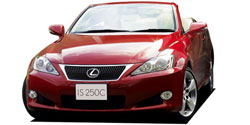1432-1. Driving procedures2When driving■When the "-" shift paddle switch is operated in the D positionWhen the "-" shift paddle switch is operated in the D position, a shift range will be automatically selected. The highest gear of the first shift range will be one gear lower than the gear in use during normal D position driving.■Automatic deactivation of shift range selection in the D positionShift range selection in the D position will be deactivated in the following situations:●When the vehicle comes to a stop●When range 6 is selected and the accelerator pedal is depressed●If the accelerator pedal is depressed for more than a certain period of time■To protect automatic transmissionA function is adopted that automatically selects a higher shift range when the fluid temperature is high.■Gear position display when drivingThe current gear is displayed on the multi-information display. (→ P. 163)■Downshifting restrictions warning buzzerTo help ensure safety and driving performance, downshifting operation may some -times be restricted. In some circumstances, downshifting may not be possible even when the shift lever or shift paddle switch is operated. (The warning buzzer will sound twice.) ■When driving with the cruise control system or dynamic radar cruise control sys -temEngine braking will not occur during shif t range selection in the D position or S mode, even when downshifting to range 5 or 4. ( →P. 175 , 179)■Snow mode automatic deactivationSnow mode is automatically deactivated if the "ENGINE START STOP" switch is turned off after driving in snow mode. ■If the shift lever cannot be shifted from P→ P. 503










![前ページ カーソルキー[←]でも移動](http://gizport.jp/static/images/arrow_left2.png)

































